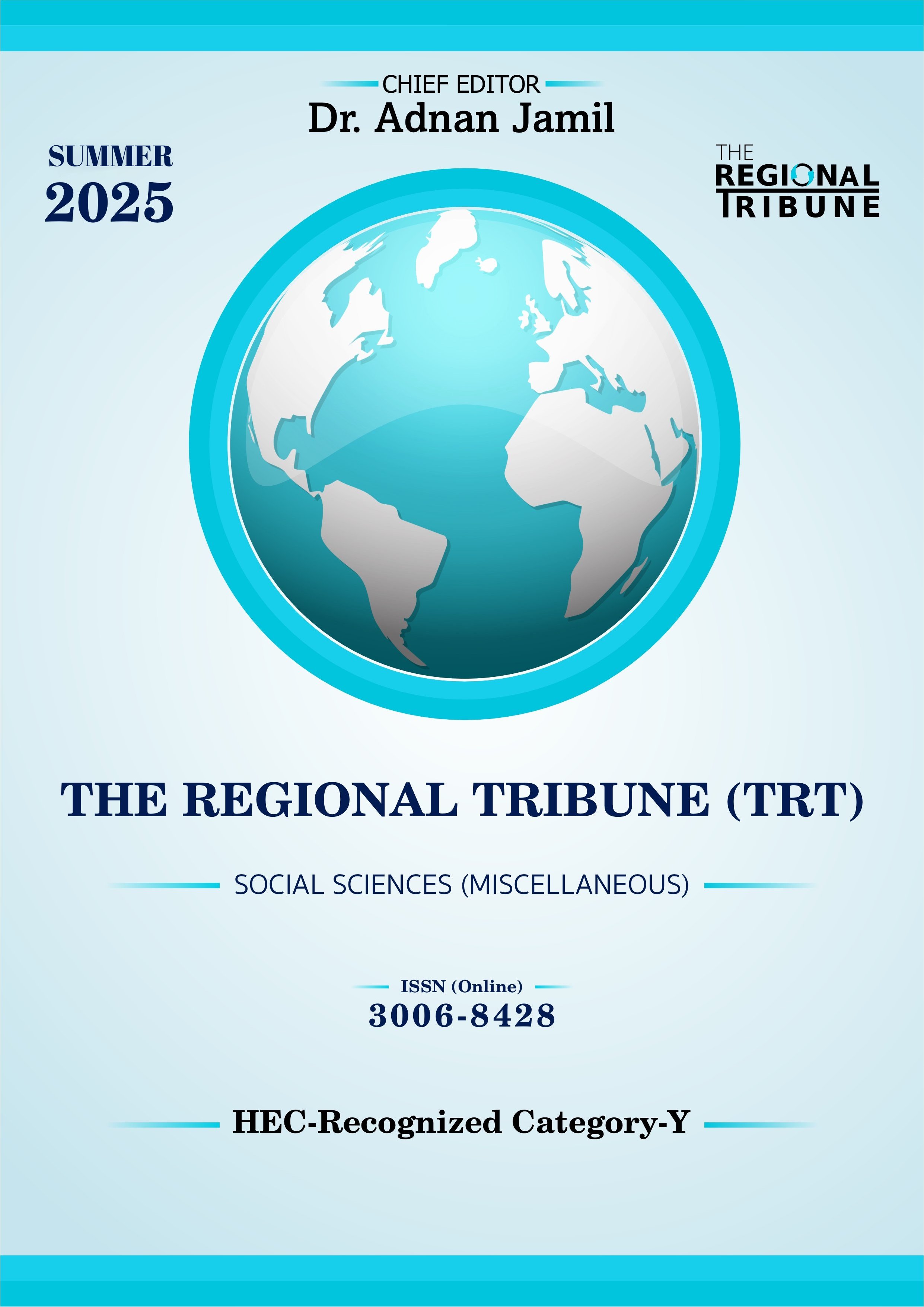Psychological Barriers as Hindrance in Communication: A Case Study at the University of Swat
DOI:
https://doi.org/10.55737/trt/SR25.124Keywords:
Psychological Barriers, Anxiety, Learning, AcquisitionAbstract
This study examines the impact of psychological barriers on communication among university students, with a particular focus on BS English 5th-semester students at the University of Swat. Psychological barriers such as anxiety, lack of confidence, fear of mistakes, nervousness, and discouragement are identified as significant obstacles to effective communication in English as a second language. The research is framed within Stephen Krashen's (1982) Affective Filter Hypothesis, which explains how emotional variables interfere with language acquisition and communication. A quantitative approach was adopted, and data were collected through a structured questionnaire administered to 30 students, comprising 15 male and 15 female participants. The responses were analysed using Microsoft Excel and presented through pie charts for clarity. The findings reveal that most students experience psychological barriers that hinder their communicative competence. Lack of confidence, nervousness, and fear of being humiliated emerged as the most acute problems. Furthermore, external factors such as the presence of highly proficient peers and discriminatory teacher behaviour contributed to students’ feelings of inferiority and reluctance to participate in communication. These barriers not only limited students’ fluency but also affected their motivation and overall learning outcomes. The study suggests that supportive classroom practices, encouragement from teachers, appreciation from peers, and a positive societal attitude toward English learning can play a critical role in reducing psychological barriers. Creating a more inclusive and motivating learning environment is therefore essential for enhancing students’ confidence and enabling them to communicate effectively.
The findings reveal that most students experience psychological barriers that hinder their communicative competence. Lack of confidence, nervousness, and fear of being humiliated emerged as the most acute problems. Furthermore, external factors such as the presence of highly proficient peers and discriminatory teacher behaviour contributed to students’ feelings of inferiority and reluctance to participate in communication. These barriers not only limited students’ fluency but also affected their motivation and overall learning outcomes.
The study suggests that supportive classroom practices, encouragement from teachers, appreciation from peers, and a positive societal attitude toward English learning can play a critical role in reducing psychological barriers. Creating a more inclusive and motivating learning environment is therefore essential for enhancing students’ confidence and enabling them to communicate effectively.
References
Bongaerts, T. (1999). Ultimate attainment in L2 pronunciation: The case of very advanced late L2 learners. In D. Birdsong (Ed.), Second language acquisition and the critical period hypothesis (pp. 133–141). Lawrence Erlbaum.
Collins Dictionary Online. (2018). Language. https://www.collinsdictionary.com/dictionary/english/language
Deci, E. L., & Ryan, R. M. (1985). Intrinsic motivation and self-determination in human behavior (p. 37). Plenum.
Gass, S. M., & Selinker, L. (2013). Second language acquisition: An introductory course: Typological and functional approaches (3rd ed., p. 242). Routledge.
Haidara, Y. (2016). Psychological factors affecting English-speaking performance for English learners in Indonesia. Universal Journal of Educational Research, 4(7), 1501-1505. https://doi.org/10.13189/ujer.2016.040701
Henter, R. (2014). Affective factors involved in learning a foreign language. Procedia - Social and Behavioral Sciences, 127, 373-378. https://doi.org/10.1016/j.sbspro.2014.03.274
Horwitz, E. (2001). Language anxiety and achievement. Annual Review of Applied Linguistics, 21, 112-126. https://doi.org/10.1017/s0267190501000071
Juhana, J. (2012). Psychological factors that hinder students from speaking in English class (A case study in a senior high school in South Tangerang, Banten, Indonesia). Journal of Education and Practice, 3(12), 100-110. https://www.iiste.org/Journals/index.php/JEP/article/view/2887/2913
Krashen, S. (1982). Principles and practice in second language acquisition. https://www.sdkrashen.com/content/books/principles_and_practice.pdf
Krashen, S. D. (1982). Acquiring a second language. World Englishes, 1(3), 97-101. https://doi.org/10.1111/j.1467-971X.1982.tb00476.x
MacIntyre, P. D., & Gardner, R. C. (1994). The subtle effects of language anxiety on cognitive processing in the second language. Language Learning, 44(2), 283-305. https://doi.org/10.1111/j.1467-1770.1994.tb01103.x
Oxford Dictionaries Online. (2018). Language. https://en.oxforddictionaries.com/definition/language
Polat, N. (2007). Socio-psychological factors in the attainment of L2 native-like accent of Kurdish origin young people learning Turkish in Turkey. The University of Texas at Austin. https://repositories.lib.utexas.edu/handle/2152/3145
Sultan, S. (2012). Students' perceived competence affects the level of anxiety in learning English as a foreign language. Pakistan Journal of Psychological Research, 27(2), 225–239. https://pjpr.scione.com/cms/abstract.php?id=350
Vemuri, R. B., Ram, M. R., & Kota, S. K. (2013). Attitudinal barriers for learning English as Second language: Problem analysis. International Journal on English Language and Literature, 1(1), 30-35.
Yazigy, R. J. (1991). Social and psychological factors in learning English as a foreign language in Lebanon. University of Leicester (United Kingdom).
Zheng, Y. (2008). Anxiety and second/foreign language learning revisited. Canadian Journal for New Scholars in Education, 1(1), 1–11. https://journalhosting.ucalgary.ca/index.php/cjnse/article/view/30393
Downloads
Published
Issue
Section
License
Copyright (c) 2025 Imran Syed, Aqleem Ejaz, Qaisar Sharif

This work is licensed under a Creative Commons Attribution-NonCommercial 4.0 International License.



